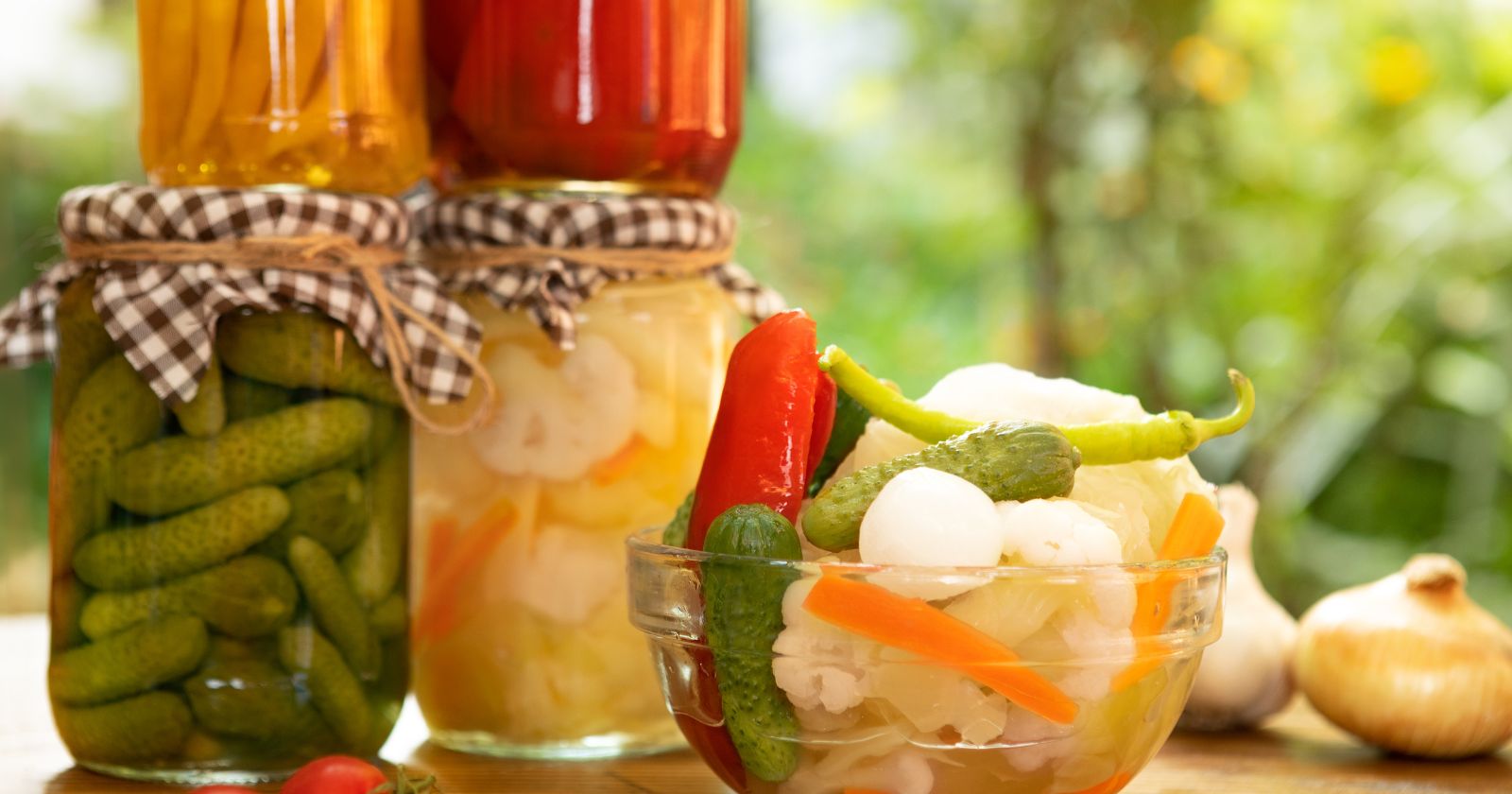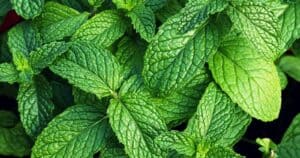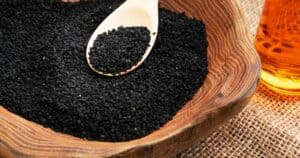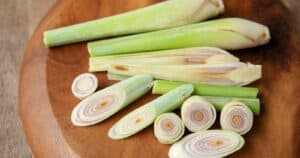Are you tired of bland pickled vegetables or fruits? Do you want to know how to create a delicious and aromatic brine? Look no further than pickling spice.
This blend of spices is versatile and easy to use and can even be substituted with other herbs if needed. Spice up your life and add some flavor to your pickled foods with pickling spice!
In this article, we’ll cover everything you need to know about pickling spice – from the ingredients commonly used in the blend to how to use it to make the perfect pickled dish.
We’ll also provide tips on how to make your pickling spice blend or substitute it with other spices.
Pickling Spice: An Introduction
Pickling spice is a flavorful blend of spices that enhances the taste of pickled fruits and vegetables.
Pickling spice typically contains allspice, bay leaves, cardamom, cinnamon, cloves, coriander, ginger, mustard seed, and peppercorns, which can be whole or coarse pieces.
This mixture adds a wide range of complex flavors to preserved foods, making them more enjoyable and delicious. If you’re looking for a way to step up your pickling game, pickling spice is a must-have ingredient in your kitchen.
When it comes to the benefits of pickling spice, there are many reasons why you should start using it today. For one, the combination of different herbs enhances the overall flavor of the pickled food, creating a unique and tangy taste that is difficult to replicate with just one kick.
Additionally, many spices used in pickling spice have health benefits, such as aiding digestion and reducing inflammation.
Another benefit to using pickling spice is that it reduces the amount of salt needed in the pickling process, as the herbs provide a rich and complex flavor.
In terms of how to use pickling spice, you can incorporate it into your pickling recipe in many different ways. One option is to add the pickling spice directly to the brine when boiling, infusing the herbs into the pickling liquid.
Alternatively, you can put the pickling spice in a cheesecloth or tea bag and place it directly in the jar with the fruits or vegetables to be pickled. This will allow the spices to flavor the food as it preserves.
Ultimately, how you use pickling spice will depend on your preference, but no matter which method you choose, the result will be tasty and unique pickled food.
Ingredients in Pickling Spice
Ingredients in pickling spice can vary, but there are some common ones that many recipes call for.
The most popular elements include mustard seed, allspice berries, coriander seeds, bay leaves, black peppercorns, dill seed, cinnamon sticks or chunks, and ginger.
Other possible ingredients that you might find in pickling spice blends include cloves and cardamom. These spices are typically used whole or in coarse pieces to flavor pickled foods.
In addition to the standard pickling spice ingredients, there are many variations you can try to customize your pickling blend. Some people like to add fennel seed, cumin, or celery seed for a unique flavor profile.
Others might add red pepper flakes or whole chilies for extra spice. You can also experiment with different types of vinegar, such as apple cider or rice vinegar, to create other pickled recipes.
When making pickling spice at home, it’s important to remember that the proportions of each ingredient can significantly impact the final flavor of your pickled foods.
Some popular pickling spice recipes call for equal parts of each component, while others might call for a specific amount of mustard seed or black peppercorns.
You should start with a basic recipe and adjust the ingredients to your liking as you experiment.
Whether you’re making pickles, sauerkraut, or any other type of pickled food, the right blend of pickling spice can make all the difference.
With so many possible ingredients and variations, you can create a unique recipe that perfectly complements your favorite types of food. So why not try making your pickling spice blend today?
Exploring the Flavors: How Pickling Spice is Used
Pickling spice is a versatile blend of spices used in various dishes to add complex flavors. One of its most popular uses is in the pickling process to add a tangy and spicy taste to preserved fruits and vegetables.
However, the pickling spice can also be used to season braised meats, stews, beans, and rice dishes. This mix of flavorful spices can be customized to personal preferences.
It can even be used creatively in the kitchen to add unique tastes to salads, sandwiches, and side dishes.
Regarding the pickling process, pickling spice is an essential ingredient. It contains all the flavors necessary to make classic pickled foods like cucumbers, beets, and carrots.
The most common elements in pickling spice are mustard, peppercorns, coriander, bay leaves, and dill seeds. Other common ingredients include cinnamon sticks, allspice berries, and cloves.
These spices are then combined to create a unique blend that can add flavor to any pickling recipe.
However, the pickling spice can also be used creatively to add spicy flavors to various dishes. It can be used to season meats like pork, chicken, or beef, adding a layer of complex flavors to the plate.
Pickling spice can also be mixed with other seasonings to create a rub for meats before grilling or roasting. Additionally, the pickling spice can add bold flavors to salads, sandwiches, and side dishes.
Sprinkling it on fresh greens or mixing it with mayo can give an ordinary dish a new taste.
If you’re a fan of pickled foods, you can also experiment with making your pickling spice blend. You can adjust the ratio of ingredients to create a unique blend that suits your taste buds.
To make your pickling spice, start with a base of mustard seed and peppercorns, and then add your desired combination of herbs. You can use whole spices or grind them up for a finer powder. The possibilities are endless!
Making Your Pickling Spice Blend
Making your pickling spice blend is fun and easy to add a personal touch to your pickled vegetables.
From mustard seed to dill seed, endless options exist to create your perfect combination. To get started, combine a few essential spices like mustard seed, black peppercorns, and cinnamon or allspice with adding a warm and tangy flavor.
However, experiment with other herbs like cloves or cardamom to create a unique blend that is perfect for you.
To create the perfect pickling spice blend, it’s essential to understand each spice‘s role. For example, mustard seed is a classic pickling spice that adds a tangy flavor and helps to preserve the vegetables.
Black peppercorns add a spicy taste, while cinnamon or allspice adds a warm and sweet taste. Bay leaves add a subtle earthy flavor, and dill seed adds a refreshing note to the pickled veggies.
When you’re ready to use your pickling spice blend, it’s essential to keep the spices whole or in coarse pieces to infuse the pickled veggies with flavor.
Additionally, if you want to make a less intense blend, simply reduce the amount of each spice. Experiment with different spice combinations until you find the perfect flavor that fits your preferences.
Substituting Spices for Pickling Spice
Don’t have pickling spice? No problem! Simple substitutions allow you to add a tasty kick to your pickling recipe.
Pickling spice typically includes whole or coarse spices, so any combination, including the main ingredients, can be used as a substitute.
Here are some additional options for when you want to switch up your pickling game:
- Cajun seasoning: This mixture of herbs and spices used in Cajun cuisine can add a bold and spicy flavor to your pickling recipe.
- Crab boil spices: These commonly used to boil seafood can also be added to your pickling liquid for a fun and unique flavor.
- Baharat seasoning: A popular spice blend used in Middle Eastern cuisine, Baharat includes warm cinnamon, allspice, and cardamom and can add a rich and slightly sweet taste to your pickled veggies.
- Jamaican jerk seasoning: A fiery blend of spices used in Jamaican cooking, including allspice, cinnamon, and spicy peppers, can add a Caribbean twist to your pickled goods.
- Ras el Hanout: Another Moroccan spice blend, Ras el Hanout includes over 20 different spices and can add an exotic and floral flavor to your pickled veggies.
Ultimately, the best substitute for pickling spice will depend on your taste preferences and the recipe. Experiment and have fun with it!





